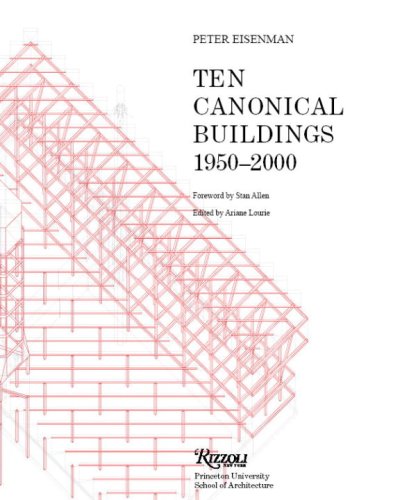Book Review: Ten Canonical Buildings 1950-2000
Main Article Content
Abstract
Ten Canonical Buildings 1950-2000 เป็นงานเขียนของ ปีเตอร์ ไอเซนแมน (Peter Eisenman) สถาปนิกและนักวิชาการชาวอเมริกัน ซึ่งเกิดจากส่วนผสมของผลงานนักศึกษาสถาปัตยกรรมที่มหาวิทยาลัยปรินซ์ตัน สหรัฐอเมริกา ในรายวิชาที่เขาเป็นผู้รับผิดชอบต่อเนื่องนับเป็นเวลาสี่ปี สาระสำคัญของหนังสือประกอบด้วยการคัดเลือกสถาปัตยกรรมจำนวน 10 อาคาร ซึ่งล้วนถูกออกแบบและสร้างขึ้นในกรอบเวลาระหว่าง ค.ศ. 1950-2000 แต่ละหลังถูกนำมาเป็น “วัตถุ” (object) ในการ “อ่าน”ด้วยวิถีทางที่ต่างไปจากการวิเคราะห์สถาปัตยกรรมโดยทั่วไปที่มุ่งเน้นแต่การอ่านถึงแนวคิดในการออกแบบ หรือคุณลักษณะเชิงรูปธรรมของสถาปัตยกรรม เช่น รูปทรง การจัดองค์ประกอบ วัสดุ โครงสร้าง หรือการอ่านตามกรอบประวัติศาสตร์โดยทั่วไป ซึ่งมีสถาปนิกผู้ออกแบบเป็นองค์ประธานหลัก (subject) ของการศึกษา แต่ไอเซนแมนใช้วิธีการอ่านที่ “ผู้อ่าน” (reader) ทำหน้าที่เป็นองค์ประธานหลัก ทำให้การอ่านแนวทางนี้เปิดโอกาสให้เห็น “สาร” ที่แฝงเร้นอยู่มากมายที่เกิดการปะทะและต่อต้านกับกฎเกณฑ์แบบเดิม ๆ ของ “ปฏิบัติการทางสถาปัตยกรรม” (architectural practice) โดยเฉพาะแนวคิดเรื่องทวิภาวะ (duality) หรือคู่ตรงข้ามในสถาปัตยกรรม เช่น “subject/object”, “figure/ground”, “solid/void”, “part-to-whole relationships” ที่ดำรงอยู่ในกรอบคิดของสถาปัตยกรรมอย่างยาวนาน นับตั้งแต่สมัยคลาสสิกต่อเนื่องมาจนถึงสมัยโมเดิร์น
Downloads
Article Details

This work is licensed under a Creative Commons Attribution-NonCommercial-NoDerivatives 4.0 International License.
All material is licensed under the terms of the Creative Commons Attribution 4.0 International (CC-BY-NC-ND 4.0) License, unless otherwise stated. As such, authors are free to share, copy, and redistribute the material in any medium or format. The authors must give appropriate credit, provide a link to the license, and indicate if changes were made. The authors may do so in any reasonable manner, but not in any way that suggests the licensor endorses you or your use. The authors may not use the material for commercial purposes. If the authors remix, transform, or build upon the material, they may not distribute the modified material, unless permission is obtained from JARS. Final, accepted versions of the paper may be posted on third party repositories, provided appropriate acknowledgement to the original source is clearly noted.
References
Eisenman, P. (1999). Diagram diaries (pp. 48-52). London: Thames & Hudson.
Prasertsuk, S. (2005). “Peter Eisenman: Diagram and the disappearance of icon.” 6 architects from architecture after modernism (pp. 55-59). Bangkok, Thailand: Corporation 4d.


